 Your new post is loading...
 Your new post is loading...
The wearable technology market is expected to reach USD 51.60 billion by 2022, at a CAGR of 15.51% between 2016 and 2022. Among the major factors propelling the growth of the wearable technology market are consumer preferences for sophisticated gadgets, increasing growth prospects of next-generation displays in wearable devices, and growing popularity of Internet of Things (IoT) and connected devices. However, the shorter life cycle of the consumer electronics sector would hamper the overall growth of the wearable technology market."Infotainment and multimedia estimated to cover maximum share of the wearable technology market" The major products in the infotainment include smart watches, augmented reality (AR) and virtual reality (VR) headsets, multimedia players with computing facilities, and smart goggles among others. The use of AR and VR in the field of entertainment and video gaming would help the wearable technology market to grow. For instance, Sony Corporation (Japan) introduced the video PlayStation with the VR glasses. These factors would drive the growth of the wearable technology market for infotainment and multimedia."Smartwatch expected to grow at the highest rate in the product segment of the wearable technology market" Wristbands and smartwatches are wearable computing devices, which are majorly used for tracking the wellness of the user. The smartwatch is a sophisticated and fashionable wearable device. This device could be connected to mobiles phones with several apps for displaying the data over the phone. Major companies such as Apple, Inc. (U.S.), Samsung Electronics (South Korea), and Fitbit, Inc. (U.S.) among others have developed such products, which satisfy the customer's need for fitness and healthcare. Hence, the consumers are more inclined to purchase such smartwatches....
CCS Insight has updated its outlook on the future of wearable tech, indicating that 411 million smart wearable devices, worth a staggering $34 billion, will be sold in 2020. The analyst claims the industry will hit $14 billion this year, with wrist-based devices – such as smartwatches and fitness trackers – continuing to dominate. Its forecast states half of all wearable tech sales over the next 12 months will be from these genres, with smartwatches making up 50% of the estimated 60 million shipments. Back in mid-2015 CCS claimed that around 20 million Apple Watches would be sold in the calendar year but it is now stating that just over 9 million Cupertino smartwatches were sold before 2016 arrived. That’s a number that gives it, according to the report, a 41 percent market share. Earlier this month Canalys estimated that Apple shipped 12 million smartwatches in 2015 – a figure it claimed was worth two-thirds of the total smartwatch market. Gartner had stated a week earlier that around 30 million smartwatches were shifted in 2015. So that’s estimates of 18, 22 and 30 million from three of the biggest analysts, proving that it’s not an exact science....
Overview Building upon a study performed in 2014, PwC launched the 2016 Consumer Intelligence Series report on wearables to better understand the wearable technology consumption landscape and identify trends in the industry to unearth potential opportunities and applications. We sampled 1,000 US consumers via an online survey to explore consumer behavior and preferences towards wearables. This research primarily focused on the attitudes consumers have towards wearable technology, as well as an in depth look at penetration and usage of various types of devices. Additionally, we explored the benefits and underlying motivations behind usage and how it impacts both individuals and society....
Wearables continue their streak with yet another increase in the number of health and fitness trackers hitting the market.
Fitbit continues to lead the field, having shipped 4 million fitness trackers just in the second quarter of this year, according to a new report.
Total shipments of basic bands, comprising mainly health and fitness trackers, passed 9 million units in the last quarter, according to Canalys.
Following Fitbit is Chinese maker Xiaomi, having sent 3 million devices into the market last quarter, followed by Garmin at 700,000 devices.
Meanwhile, wearable-maker Jawbone has attempted to sell its wearable business, according to a report in The Information, though Jawbone said the story is false. Shipments of their devices didn’t even register in the report.
Welcome to Part 2 of our latest blog series giving you early access to the upcoming BrainXchange-Hewlett Packard Enterprise white paper, which examines several real-life use cases of wearables at work in different enterprise operations. In Part 1, we shared an example of how an advanced collaboration platform like HPE’s MyRoom/VRG coupled with wearable technology could revolutionize the automotive recall process for a major auto manufacturer. Today we will see how a heavy machinery manufacturer could use wearables to provide remote support and on-the-spot training to its partners and customers. The complete white paper will be available for free download on May 18th. Sign up today to receive the white paper directly in your inbox when it goes live.
Many consumers plan to purchase a health or fitness device in the next 12 months, according to a 2015 survey. Smart watches and fitness trackers are among the wearables they plan to buy.
The Consumer Technology Association (CTA), formerly the Consumer Electronics Association (CEA), surveyed 1,001 US internet users. Almost three-quarters of respondents said they plan to purchase a health or fitness tracker within the next year.
More than one-third of that group said they plan to buy a smart watch and 30% said they intend to purchase fitness apps in the next 12 months. Some 27% of health and fitness device buyers said they expect to buy wearable fitness devices, and the same percentage said they plan to purchase smart apparel. Sleep trackers were also on the list; 23% of respondents said they intended to buy one....
The number of wearable devices is growing, by a lot.The number of fitness trackers and smartwatches shipped around the world in the last quarter is about double the number shipped a year ago, according to the latest IDC Tracker report.
Leading the category are fitness trackers by Fitbit followed by the Apple Watch.
While there’s clear growth in the number of wearables, there doesn’t seem to by any cannibalization of the market, since fitness trackers and smartwatches both grew in scope.
A total of 21 million wearable devices shipped last quarter, an increase of 198% from the same quarter last year. Of those, 5 million were Fitbit devices and 4 million were Apple watches....
Asia Pacific was home to 34% of the worlds, connected wearables last year. It is estimated that by 2025, the global wearable technology market will be worth some 70 billion U.S. dollars. So far, fitness and health related functions are dominating the space, as well as devices that can form linkage to functions currently available in a Smartphone, such as GPS. But is this just a playground for the big tech companies and early adopters? Or is this a significant shift in the way we will lead our lives?
The key question this piece of market research aims to discover, is whether or not we actually know our consumers well enough, in terms of their acceptance and expectations of such products. Are consumers in Asia Pacific playing catch up, or are they actually leading this trend in consumer wearable technology? How can marketers and manufacturers succeed in this area?...
Resource-based industries are up against rising costs, manpower shortages, and the pressure to be more sustainable. A new Internet of Things Centre of Excellence for Resources by Accenture will help companies tackle these challenges and reap trillions of dollars in economic opportunities....
Twelve months ago, wearable technology was the preserve of geeks in virtual-reality headsets and early adopters touting clunky smartwatches. Not any more. A recent report predicted Britons would spend £104.7million on wearable technology this Christmas as consumers snap up fitness gadgets, intelligent watches and gaming systems. This is just the beginning. Wearables could be the defining technology of the next decade. You may still own a smartphone in 2020, but I wouldn’t bet on it.
By 2015, there are likely to be three key wearable trends: the huge growth of smartwatches, the arrival of technology integrated into clothing and the acceleration of the use of wearables in business. You probably know a little about smartwatches courtesy of some high-profile launches. Next year, the battle for your wrist will go into overdrive with the world’s major consumer electronics firms launching innovative devices....
Will wearable technology take off in China? Xiaomi clearly thinks so.
After launching its own ultra-cheap, $13 fitness wristband just months ago, China’s largest smartphone company Xiaomi has invested in Misfit Wearables, a California-based wearable technology company that has designed the sleek-looking, all-metal activities tracker “Shine.”
Chinese investors have committed to investing $6 billion in U.S. technology companies in the first quarter of 2014, a significant jump from the previous four years when annual investment topped $1 billion. This is however Xiaomi’s first U.S. deal, trailing Alibaba and Tencent in investments of American start-ups...
How Do You Feel About The Future Of Wearable Tech As Part Of Everyday Life?
It is a super exciting time for wearable entrepreneurs! The early generation of wearables has offered a promising step towards what could be achieved over time with the new generation of wearable products.
The wearable industry is still in its infancy. Although wearable makers have spent significant effort to marry hardware and software technologies and build cool products, there is still a lot to be discovered, learned, and applied in this industry.
As a wearable maker, there are six elements to consider and successfully navigate in order to build a winning product that will be adopted by the majority of the population:...
|
According to the new market research report "Wearable Technology Market by Product (Wristwear, Headwear/Eyewear, Footwear, Neckwear, Bodywear), Type (Smart Textile, Non-Textile), Application (Consumer Electronics, Healthcare, Enterprise & Industrial), and Geography - Global Forecast to 2022", The wearable technology market is expected to grow from USD 15.74 Billion in 2015 to reach USD 51.60 Billion by 2022, at a CAGR of 15.51% between 2016 and 2022. The future growth of the wearable technology market is expected to be driven by consumer preference for sophisticated gadgets, increasing growth prospects of next-generation displays in wearable devices, and growing popularity of Internet of Things (IoT) and connected devices....
A three year research report from IDTechEx estimates that the global wearable technology market will be worth over $30 billion in 2016. The report says that the market will grow in three stages: 9% annually to over $40 billion in 2018, but then accelerating to 23% through to over $100 billion by 2023, before slowing to 10% to reach over $150 billion by 2026. The report details IDTechEx's coverage of the wearable technology ecosystem, which looks at the industry from many different perspectives, with detailed discussion framing core primary research and market forecasting. It studies the historical context for wearable technology products, looking at key yet contrasting sectors such as medical devices and commodity infotainment items like headphones or electronic watches. The report includes sections on key product areas such as fitness trackers, smartwatches, smart clothing, smart eyewear (including AR and VR), smart skin patches, headphones, etc. It also looks separately by application sector, including healthcare and medical, fitness and wellness, professional sports, infotainment, enterprise, military and fashion....
Don’t expect to see too many wearable devices like Apple Watches and Fitbits under Christmas trees this year—they’re not on many wish lists.eMarketer has significantly revised its estimates of wearable-device users in the US. The still-young category showed early promise, but usage has not expanded beyond early adopters. In October 2015, eMarketer expected usage among US adults to grow more than 60% this year. But according to its latest forecast, it will only grow 24.7%, as smart watches in particular have failed to impress consumers. This year, 39.5 million US adults will use a wearable device (with internet connectivity) at least once a month, far less than the 63.7 million previously forecast. Smart watches haven’t caught on in large numbers, primarily because of their high price point and lack of definitive use case. This year, usage of wearables will reach just 15.8% of the population. That penetration rate is only expected to grow to 21.1% by 2020....
This skin patch monitors the alcohol levels of the wearer accurately enough to be used by police when testing potential drunk drivers. But law enforcement isn’t its only use. An individual could choose to wear their own patch and have it send wireless updates of their blood alcohol levels to their smartphone.
The sensor, which comes from the University of California San Diego, comprises two parts. The first is a temporary tattoo that sticks to the skin and delivers a drug, pilocarpine, to induce sweating. The tattoo also contains detectors that are highly sensitive to ethanol in the generated sweat.
The user then applies the electronic part over the top of the tattoo, which stays in place using magnets. This controls the sensing operation, as well as transmitting the raw data over Bluetooth to a waiting device, most likely a smartphone....
The next several years will continue to see double-digit growth in the number of Americans using wearable devices, according to eMarketer's first wearables forecast. In 2015, 39.5 million US adults 18 and over will use wearables, including smartwatches and fitness trackers. That's a jump of 57.7% over 2014. While penetration among US adults is just 16.0% this year,
eMarketer expects that to double by 2018, to 81.7 million users.eMarketer defines wearable users as those who wear accessories or clothing at least once per month that are embedded with internet-connected electronics and exchange data with a manufacturer or other connected device....
From fancy door locks to sprinkler systems, Denver-area companies are figuring out new ways to live smarter with the Internet by making things. Lots of things. The Internet of Things is a trend to build Internet connections into everyday objects to help people track and control those objects.
Common IoT devices include light bulbs, watches and home thermostats such as Nest. There's even a new home-grown IoT community called TechRiot, backed by Arrow Electronics and the Innovation Pavilion in Centennial. What started as a meeting among interested IoT developers in July has grown to more than 1,000 members.
That just gives us more gift options. If you're shopping local this year, here is a roundup of Internet-friendly products from local IoT companies...
Marketers would love to know what's going on inside your head when you watch their commercials — and now they can find out, thanks to a technique called neuromarketing.
Brainsights is a Toronto company that specializes in scanning people's brainwaves in order to see if they're responding to companies' messages and content, whether they're emotionally engaged, and whether they'll remember any of it."
For advertisers, for anybody in communications, this is kind of a holy trinity," said Dan Iwasa-Madge, the company's head of products and analysis during a presentation at the Wearable Entertainment and Sportsconference in Toronto Tuesday....
Are wearables the next big thing for smart products or a high-cost segment being forced into the market in lieu of meaningful innovation? It appears that the latter may be closer to the truth at the moment, as Juniper Research has found that very few consumers are interested in expensive wearable gadgets.
From a survey of just over 2,000 smartphone owners in the UK and US, the research found that only 1 in 5 customers are prepared to pay more than $175 for any sort of wearable device. This doesn’t bode well for the range of more expensive smartwatches that have hit the market lately, and probably also goes some way to explain the popularity of lower cost sports wearables, such as the FitBit range.
Starting at $300, the recent Samsung Gear S2 is way above the apparent price ceiling for wearables.However, this trend is somewhat at odds with the research team’s finding about the ‘coolest’ brands. Both Apple and Samsung, which offer the most expensive wearables on the market, topped the rankings, with over 75 percent of respondents stating that they preferred these two brands. Other Android Wear manufacturers make up the top five, while Pebble and a number of sports brands, which feature lower price tags, are dotted lower down the list. Fashion brands didn’t fare too well either....
Wearable technology–a natural extension of online and mobile channels–is quickly emerging as the latest consumer engagement channel presenting new opportunities for brands to deliver more personalized and informed service, faster checkout, greater access to discounts and deals, and real-time input into consumer purchasing decisions.
ARTICLE HIGHLIGHTS: - Consumers want seamless customer engagement from mobile and social to wearables. - Marketers need to understand how each consumer prefers to interact with brands through wearable devices. - By creating personalized and relevant interactions, brands can turn their customers into lifetime brand advocates
.By 2018, wearable technology is projected to grow to a $19 billion market. Nearly 70% of consumers are reporting they are ready to engage with brands through wearable tech devices, according to our recent Wearable Technology Survey....
The Internet of Things is expected to grow to approximately 75 billion connections by 2020, merging our physical and online worlds. The implications for both consumers and marketers are obvious and far-reaching — as more consumers connect their everyday lives to an increasing number of smart devices, marketers will have the opportunity to not only better understand the lifestyles and habits of their customer, but offer even more personal and intimate contextual experiences than ever before.
Below are a few of the implications for both consumers and marketers as the Internet of Things continues to evolve.
Google Glass and Apple Watch capture most of the headlines when it comes to wearables, but there are other devices on the market today bringing us closer to a more high-tech future. And while there are concerns about this sort of technology overstepping boundaries, such devices can improve lives in the right situation.
As a refresher (or introduction), wearables come in the form of eye wear, smartwatches and wristbands. Companies are developing wearable devices primarily for the consumer market (think health and fitness gadgets), but some can be used in an industrial setting. For example, some companies are evaluating Google Glass for business use cases such as field service operations and repair and maintenance work.
That said, market research indicates wearables have the potential to move from a tech fad to a necessity.
With the arrival of more user-friendly wearables, cheaper devices and consumer awareness, expect to see more people purchase them. Tech aficionados will be the first adopters, but in the next 10 years wearables can be as ubiquitous as the smartphone is with consumers today.
A report from the Transparency Market Research estimates the global market for wearables was $750 million in 2012 and expected to reach $5.8 billion in 2018. Juniper Research says that the market could be as big as $19 billion by 2018....
GThough the Internet of Things era has only just started, it may already be broken.
Like generals fighting the last war instead of the next one, many companies working to build the Internet of Things seem to be stuck in the smartphone and tablet era, embracing approaches that will soon be obsolete, if they aren’t already.
Today, smartphones are powerful hubs surrounded by less intelligent objects. Each device is managed and operated from a few centralized data centers. This is not yet a major issue as devices currently last only a year or two before being decommissioned. The cost of managing data centers is limited in duration and underwritten by a constant flood of replacement devices with short lives.
Not so in the Internet of Things era: an LED lightbulb has an expected life of 20+ years; aircraft are expected to remain in service for decades; the average car on the road in the US is now more than a decade old.
Applying a centralized cloud-based business model to these devices will mean decades of expense without decades of associated revenue. At IBM we already see clients that are struggling with device-related services that have failed to meet revenue targets, but cannot be switched off for fear of angering an installed base....
|



 Your new post is loading...
Your new post is loading...

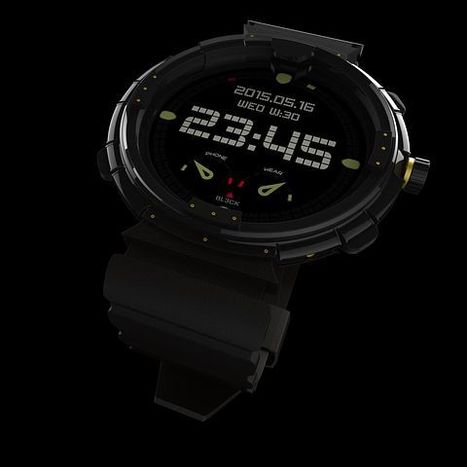

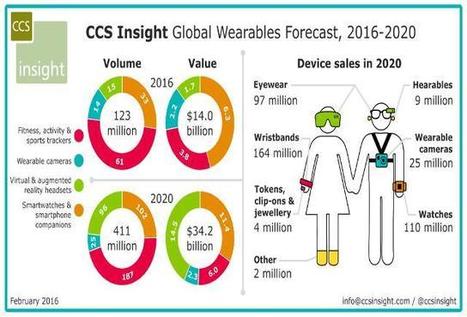
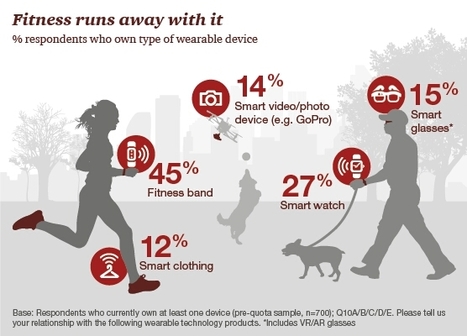
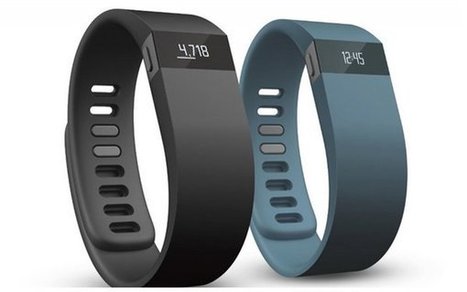

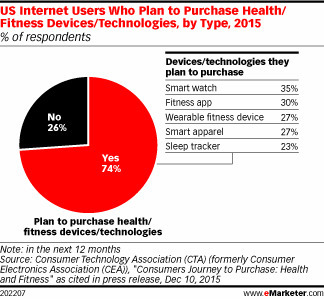
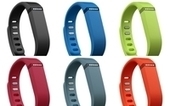
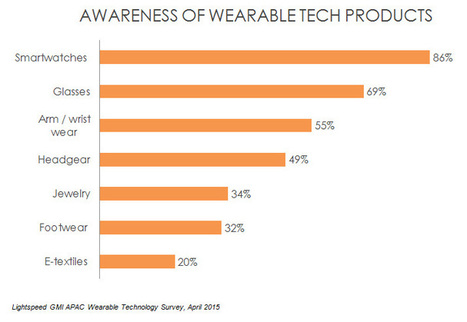


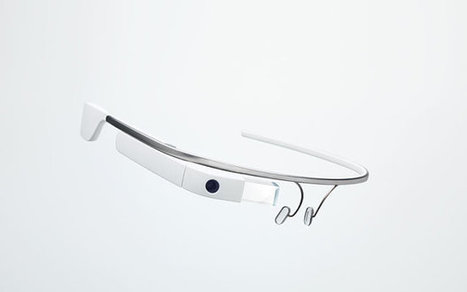


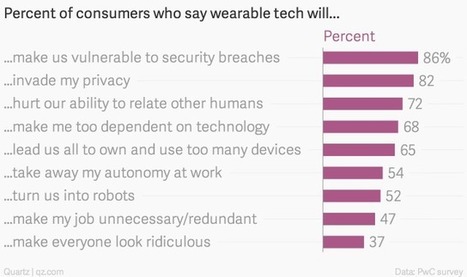

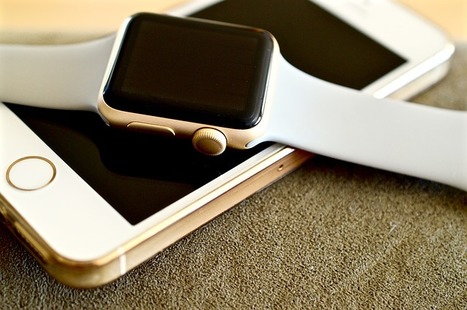

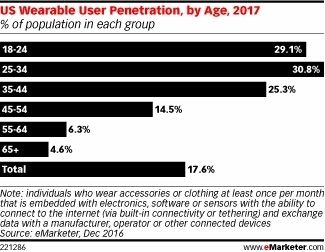
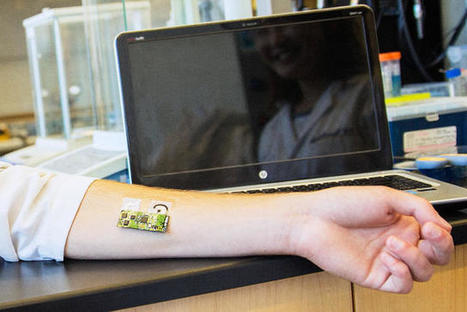
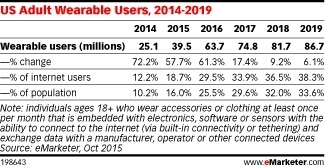

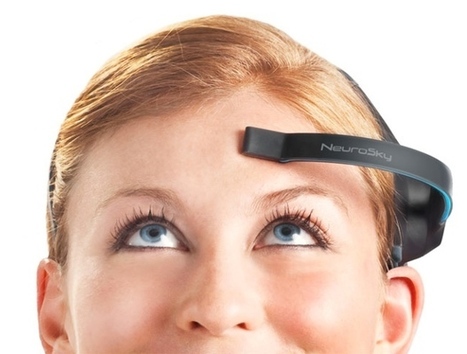




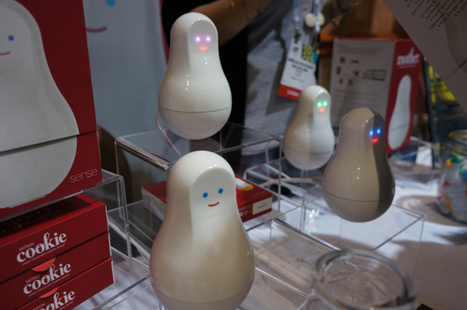






Consumer growth highlighted.